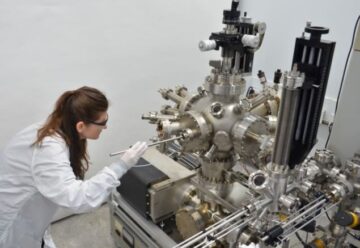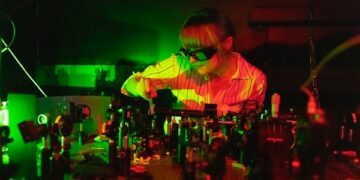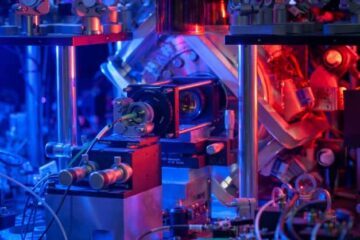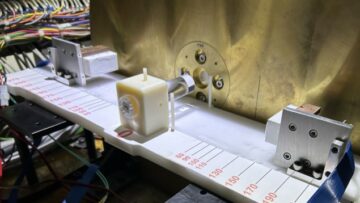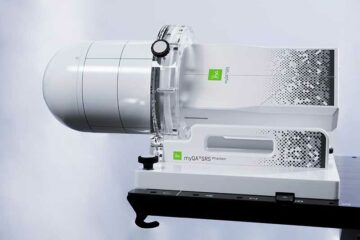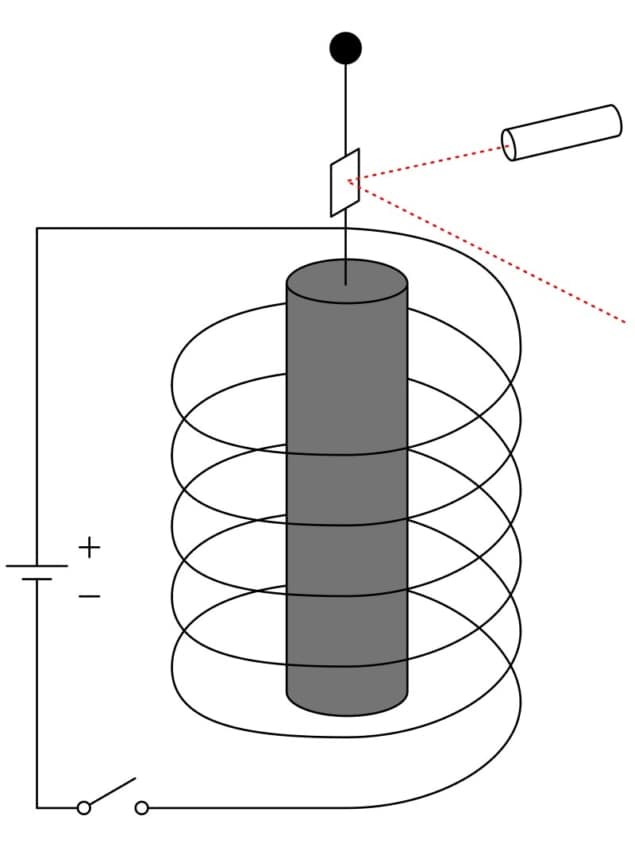
Albert Einstein is famous as a theoretical physicist, but he also did one significant experiment. This was the Einstein–de Haas experiment, which he did in 1915 with the Dutch physicist Wander de Haas. This work showed that the magnetization of ferromagnetic materials such as iron is related to the angular momentum of electrons.
Now, some of the apparatus used by Einstein and de Haas has been found languishing in the Ampère Museum near Lyon, which is one of France’s oldest science museums. The finding was made by Alfonso San Miguel of the Claude Bernard Lyon 1 University and Bernard Pallandre, who is a curator at the museum. They say that the provenance of the objects can be verified by documents associated with Geertruida de Haas-Lorentz. She was a physicist and the wife of de Haas. San Miguel and Pallandre say that she donated the equipment to the museum in the 1950s.
The Einstein–de Haas experiment involves a cylinder of ferromagnetic material that is suspended by a thread so that it can rotate about its axis of symmetry. A mirror is situated at top of the cylinder such that the rotation of the cylinder can be measured by reflecting a beam of light onto a screen (see figure).
Curious rotation
The cylinder is placed in the centre of a solenoid. When an electrical current is sent through solenoid, it creates a magnetic field that magnetizes the cylinder – which becomes a bar magnet. This results in the cylinder to rotating slightly, which is observed in the deflection of the light beam. If the magnetic field is then reversed, the cylinder rotates in the opposite direction.
This rotation is not predicted by classical electromagnetic theory because the cylindrical symmetry of the experiment offers no way for the magnetic field to exert a torque on the ferromagnet.
Instead, the observed rotation supports the idea that magnetism is created by charged currents that flow in circles within a ferromagnetic material – an idea that was first put forth nearly a century earlier by the French physicist André-Marie Ampère.
As well as magnetic moments, these orbiting electrons also have angular momentum. The magnetization of the cylinder involves the alignment of these magnetic moments. This results in changes in the directions of the angular momenta of the electrons when the magnetic field is applied. Because angular momentum must be conserved, the cylinder rotates in response to this change.
We now know that electrons have intrinsic angular momentum (spin) as well as orbital angular momentum. The Einstein–de Haas experiment can be used to study how both of these contribute to the magnetization of a material.
- SEO Powered Content & PR Distribution. Get Amplified Today.
- PlatoData.Network Vertical Generative Ai. Empower Yourself. Access Here.
- PlatoAiStream. Web3 Intelligence. Knowledge Amplified. Access Here.
- PlatoESG. Carbon, CleanTech, Energy, Environment, Solar, Waste Management. Access Here.
- PlatoHealth. Biotech and Clinical Trials Intelligence. Access Here.
- Source: https://physicsworld.com/a/einsteins-only-experiment-is-found-in-french-museum/
- :has
- :is
- :not
- 1
- a
- About
- alignment
- also
- an
- and
- Angular
- applied
- AS
- associated
- At
- Axis
- bar
- BE
- Beam
- because
- becomes
- been
- both
- but
- by
- CAN
- centre
- Century
- change
- Changes
- charged
- circles
- claude
- click
- contribute
- courtesy
- created
- creates
- Current
- de
- DID
- direction
- directions
- do
- documents
- donated
- Dutch
- Earlier
- einstein
- electrons
- equipment
- experiment
- famous
- field
- Figure
- finding
- First
- flow
- For
- forth
- found
- French
- Have
- he
- High
- How
- HTTPS
- idea
- if
- image
- in
- information
- intrinsic
- involves
- issue
- IT
- ITS
- jpg
- Know
- light
- Lyon
- made
- Magnetic field
- Magnetism
- material
- materials
- max-width
- measured
- mirror
- Moments
- Momentum
- Museum
- Museums
- must
- Near
- nearly
- no
- now
- objects
- observed
- of
- Offers
- oldest
- on
- ONE
- only
- onto
- open
- opposite
- orbiting
- physicist
- Physics
- Physics World
- placed
- plato
- Plato Data Intelligence
- PlatoData
- predicted
- provenance
- put
- reflecting
- related
- response
- Results
- San
- say
- Science
- Screen
- see
- sent
- she
- showed
- showing
- significant
- situated
- slightly
- So
- some
- Spin
- Study
- such
- Supports
- suspended
- symmetry
- that
- The
- then
- theoretical
- theory
- These
- they
- this
- Through
- thumbnail
- to
- top
- true
- twist
- university
- used
- verified
- was
- Way..
- WELL
- when
- which
- WHO
- wife
- with
- within
- Work
- world
- zephyrnet


